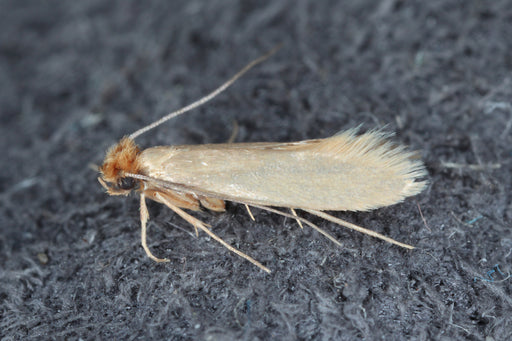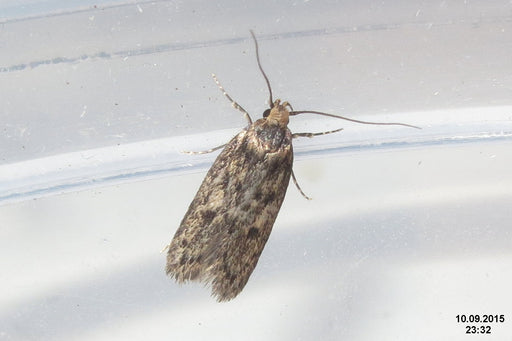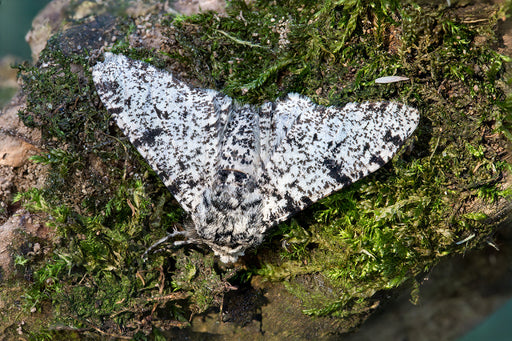15 Types of Moths a Homeowner Should Know

Owning a house means constantly juggling a myriad of labors like mowing the lawn, maintaining your appliances, and the occasional surprise plumbing emergency. However, one very crucial yet commonly overlooked part of homeownership is preventing destructive pests. Moth prevention, for example, can help you keep your house and all of the belongings inside of it safer and in top-notch condition, for longer.
So what kinds of moths should homeowners know about? After all, there certainly are plenty of different moths out there, and only a few of them pose a real threat to your household. Some species will destroy your carpets and drapes while others actually help pollinate your garden. How can you tell the difference?
Not to worry, and in this comprehensive guide, we will go over all of the different types of moths you need to recognize so that you can defend your castle from pesky flying intruders! We’ll also cover a few types of moths to keep around for pollination and general ecological health. Armed with the facts, you can handle business on the homefront and protect your possessions with less hassle and more confidence!
First Things First: What to Know About the Different Types of Moths in House and Garden Zones
If you are wondering something along the lines of "What types of moths in my house should I avoid?", there are a few key things you should know. After all, various types of moths can congregate in gardens and homes. Sometimes, visits from moths are short and harmless. In other scenarios, moths will infest a home and wreak pure havoc until exterminated. So, knowing what to watch out for is definitely important!
Keep in mind that there are over 160,000 different species of moths in the world. To put it in perspective, there are only about 17,000 species of butterflies out there! Therefore, knowing each individual moth species is virtually impossible for the average (and likely busy) homeowner. Unless you happen to be an entomologist with a lot of free time and an impeccable memory, you'll never know all of the moth species out there.

With that being said, only a few types of moths in houses are actually a legitimate problem. Moreover, out of the peskier, problematic kinds of moths, only two main types represent a genuine threat to your household and valuable belongings. So, we’re going to cover those, most problematic pest moths, in-depth, first. From there, we’ll look at some less common moths that can cause issues for your home. Many are annoying but typically harmless, and a few, are even good moths to have around the garden!
Now that we've got that straightened out, let's dive into the 15 types of moths all homeowners should get familiar with!
The Two Worst Types of House Moths and How to Keep Them Out of Your Home
Without further ado, the two worst kinds of moths in a house are the Clothes Moth and the Pantry Moth. Pestilent moth species like Clothes Moths and Pantry Moths can be a serious problem and wreak havoc in your abode. In their larval stages, Pantry Moths can eat through all sorts of dry goods while Clothes Moths will happily burrow through fine fabrics and annihilate your favorite outfits.
There are numerous subspecies of both of these types of moths and they can all be harmful. However, to keep things simple, we will look at these moths as a whole and tell you how to keep them away.
1. Clothes Moths
The scientific name for the Clothes Moth is Tineola bisselliella. Common types of Clothes Moths include Webbing Clothes Moths, Common Clothes Moths, Carpet Moths, and Casemaking Clothes Moths. However, any species of fungus moth larvae or lesser species of Tineola bisselliella can be a problem in your house, readily willing to destroy clothing, carpets, furniture, tapestries, and even things like siding and insulation!
These moths lay eggs near what they deem to be delicious food sources. The eggs hatch into hungry larvae that begin eating their way through all edible materials nearby. Unfortunately, to the Clothes Moth Larva, a palatable food source could be essentially any natural, animal-based fibers, or biodegradable fabric material. This means that Clothes Moth Larvae will eat through textiles such as silk, fur, wool, cotton, cashmere, or even tougher materials such as leather and suede.

What Clothes Moths Eat
Pretty much any organic or animal-based material is at risk of Clothes Moth damage. Though the larvae can basically gnaw through anything, they prefer animal-based fibers that contain lots of keratin. Wool, silk, furs, and cashmere are all favorites of the Clothes Moth. So, they will happily target wool fibers in rugs, carpets, blankets, or drapes and cause damage.
Where Clothes Moths Live
Common Clothes Moths prefer temperate climate zones and can be found all across Europe, the United States, the United Kingdom, and even in many parts of Canada. Some species of Clothes Moths prefer warmer climate zones in Asia and South America. Basically, these moths infest homes and buildings all over the world.
Recognizing and Preventing Clothes Moths
Identifying and preventing Clothes Moths is essential for all homeowners. Clothes Moths are small and usually come in muted color tones like beige, gray, light gold, brown, silver, or taupe. They may or may not have camouflage patterns on their wings.
The wings of the Clothes Moth often seem “tattered” at the edges. Adult Clothes Moths can have silver or brown colored wings that come together in an A-frame shape behind their head. They have fore and hind wings with fringes or hairs along the margins. Depending on the age of a Clothes Moth, its color could be lighter or darker. These moths grow to about ½ of an inch long.
Signs of Clothes Moths in your home could include holes in clothing or fabric materials, live larvae, dead larvae, small casings, or sightings of adult moths flitting from place to place. These moths are weak flyers and tend to flutter around and die after laying eggs.
Clothes Moths prefer dark, quiet, undisturbed areas with plenty of animal-based fibers around in order to provide a food source near to where they lay their eggs. To prevent Clothes Moths, make sure to keep all areas where natural fabrics are stored clean and dry. Dust regularly and seal off any areas exposed to the outdoors. Hang herbal sachets or use cedar to deter the moths.
Moth Traps are also incredibly important for preventing these moths. MothPrevention Clothes Moth Traps can be placed in areas where wool or other animal-based materials are regularly stored and they are active for 12 weeks after opening. If your home will be vacant for any extended period of time, consider placing fresh moth traps all throughout your house.

Also, be sure to inspect any used furniture, rugs, fabrics, or secondhand materials for moth larvae or eggs before carrying them into your home. If you suspect that an item may be harboring moth eggs, seal it in a trash bag and freeze it for 72 hours to kill eggs and larvae.
2. Pantry Moths
Pantry Moths, also known as Indian Meal Moths, come from the moth species Pyralidae. Found all over the world, they are another typical household pest. Common names for Pantry Moths include Weevil Moths, Flour Moths, Grain Moths, Mealy Moths, and the Indian Meal Moth.
Usually, the female Pantry Moth will lay her eggs in the corners of food packaging. The eggs hatch into larvae that begin eating through the most readily available dry goods or edible food sources. The larvae eat, grow, and then mature into adulthood before mating. From there, the cycle repeats. So, you could wind up with multiple generations of Pantry Moths over the course of just a year or two!
What Pantry Moths Eat
Pantry moth larvae are ravenous and can eat essentially any type of nutritious dry good item. This could include cereal, grain, flour, spices, oats, cornmeal, nuts, birdseed, dog food, cat food, beans, rice, spices, candy, and chocolate. Basically, if it is dry, nutritious, and stored in a pantry or cupboard, Pantry Moth larvae will happily dig in.
Where Pantry Moths Live
There are many different types of pantry moths and they can be found all over the world including most parts of North America, Europe, Asia, and Canada. These types of house moths love to get into pantry spaces or any other spots where you happen to be storing food. In particular, they like closets, larders, storerooms, cupboards, drawers, and of course, quiet pantries where they can lay their eggs. Female Pantry Moths will lay eggs in or near dry food goods such as flour, cereal, grain, etc.
Recognizing and Preventing Pantry Moths

Unfortunately, most people do not realize that they have been visited by a female Pantry Moth until they find dead larvae, larval casings, or worst of all, live larvae, in their food. This could look something like scooping a cup of flour out to bake with and then realizing little brown worms are crawling around in your cookie dough midway through a recipe. Yuck!
So how can you avoid pantry moths? Identifying and preventing pantry moths will involve knowing how to spot an infestation and keeping your pantry or larder clean and pest-free.
Regularly inspect your pantry items, especially grain, flour, pet foods, and cereals stored in cardboard or paper, for signs of moths like holes chewed through packaging corners. You can also look for larvae. If something is expired, toss it out.
Be sure to seal off any areas that have exposed air flow to the outdoors. If you can't seal something off, place pantry moth traps nearby. You should also position pantry moth traps throughout your pantry and switch them out regularly. MothPrevention Pantry Moth Traps will be active for 8 weeks after opening and have powerful pheromones that attract the active adult male moths and help break the breeding cycle.
Keep your pantry clean and regularly inspect for signs of moths. Also, check items at the grocery store for signs of Pantry Moths before bringing them home.
Less Common Types of Moths that You Still Want to Keep Out of Your House
Now that you fully understand which types of moths are most problematic in houses, let's talk about some less commonly seen pestilent moth species to be on the lookout for. While these different types of moths aren't as big of a deal as Clothes Moths or Pantry Moths, they can still be an issue to look out for.
3. Brown House Moths
The Brown House Moth, or, Hofmannophilam pseudospretella, is in the class Oecophoridae. This common household pest is thought to have originated in Asia. They are considered serious pests in domestic and commercial settings because they have destructive larvae that can feed on all kinds of materials including feathers! Closely related to Clothes Moths and often considered a type of Clothes Moth, they can eat through feathers, hemp, wicker, and more.
 David Short from Windsor, UK, CC BY 2.0, via Wikimedia Commons
David Short from Windsor, UK, CC BY 2.0, via Wikimedia Commons
In their destructive larval phase, they leave behind deposits of silk or silken tubes. These moths are more common in areas with high humidity. The larvae can also feed on man-made food items and household materials like dried fruit, seeds, fur, fabric, or even the inlays of wooden flooring. They can also eat bottle corks, leather, and book bindings!
This moth’s destructive abilities come from its larvae’s inherent power to consume and degrade keratin via a lactic acid bacteria present in the gut. In the adult phase, the brown house moth is small and as the name suggests, brown. They are no larger than 1/2 of an inch long and have a speckled pattern on their wings. Brown House Moth Larvae can be white, yellowish, brown, light brown, or tan with a dark head and a midsection that measures anywhere from 1/8 of an inch to nearly 1/2 of an inch long.
4. Diamondback Moths
Likely originating in Europe, Diamondback Moths are common in North America, the United Kingdom, British Columbia, and essentially everywhere in between. They can even be found in Florida and the Rocky Mountains. Diamondback Moth Larvae are green in color. As adults, these moths are small, grayish brown, and slender. They have pronounced antennae and measure about 6 mm long.
Diamondback Moths attack plants in the Cruciferae family. This means that they eat all cruciferous vegetables and crops including cabbage, sprouts, broccoli, cauliflower, collard greens, etc. They cause ample plant damage in their larval feeding stages. Suffice it to say, this is a type of moth that you definitely don't want in your garden!
The Annoying But Mostly Harmless Moths that Sometimes Get In Houses
Now that you know what kinds of moths to avoid, let's talk about some moths that aren't particularly harmful in most standard homeowner situations. Although annoying, most of these moths aren’t especially damaging. Some of them are even valuable to local ecosystems. Still, they’re not particularly helpful either and generally won’t aid you in pollinating your garden.
5. Miller Moths
People are quick to call all kinds of moths “Millers”. Indeed, the name Miller is synonymous with the name moth in many regions in the United States. True Miller Moths infest Mills and are species of Grain Moths or Indian Meal Moths. We went over those above in the Pantry Moth section. Another kind of moth often referred to as a “Miller” is the Army Cutworm Moth.
Army Cutworm Moths are a species of migratory moth that can be shockingly abundant in the late spring, early summer, and midsummer throughout the Northern and Midwestern United States. In regions all across South Dakota, Nebraska, North Dakota, Colorado, Wyoming, and Montana, they seem to show up out of nowhere in the millions. They then migrate to higher elevations in search of flowering plants, usually in the Rocky Mountains

Army Cutworm Moths are a little less than one inch long and have brown or gray wings with darker, speckled patterns. They have large fuzzy thoraxes and thin antennae. Although they aren’t harmful, it can be shocking and agitating to find live and dead moths in the house, on the porch, and even in your car! Not to mention, these moths can show up first in the 10s, then 100s, then 1000s over the course of just a few days in the warmer months of the year. They are nocturnal and attracted to light, meaning that at night, they may fly into lightbulbs, televisions, and sometimes, people's faces.
While they may be annoying, these moths do play an important environmental role in the United States. During mating and migration, they serve as a critical food source for birds, bats, and many other small mammals. Although it can be shocking to suddenly get visited by an army of large brown moths, they aren’t damaging to clothes, pantry items, or household goods. They are also great pollinators of local plant life.
6. Sod Webworm Moths (Lawn/Grass Moths)
Sod Webworms are the larvae of small lawn/grass moths. These moths live in the grass in the Midwest and Southern United States. They can also be found in parts of Canada, the United Kingdom, and Europe.
Usually white, light tan, yellowish, or cream in color, these small moths like to live down low in the grass. They are most active in the spring and summer. While not necessarily a huge problem or source of damage, they can definitely make your lawn look sparse if left unchecked. In the larval phase, sod webworm moths eat grass, sod, and other low-growing plants.
7. Fall Webworm Moths
Fall Webworm Moths are gregarious insects that prefer to live outdoors in tree branches or tall bushes. As adults, they create webs that protect them from predation and provide thermal insulation. These webs may look like spiderwebs but are actually nests. While not especially destructive, these moths can certainly make your garden look less attractive. Plus, who wants a web filled with moth larvae hanging over their head?
8. Wax Moths

Wax Moths have a distinct look. They sport yellowish heads and bodies that are silver, gray, or beige in color. Wax moths can be found all over the world in warmer climates. In the larval stage, wax moths destroy bee colonies and consume beeswax. As such, they are definitely a pest to watch out for if you’re an apiarist. However, if you aren't keeping bees, they’re not really an issue.
9. Cabbage White “Moth”
The Cabbage “White Moth”, or, Pieris rapae, is a small or medium-sized butterfly. Often confused with a moth due to its small size, pale colors, weak flight patterns, and occasionally nocturnal behaviors, it can be found in most of North America and parts of Europe. This small, white insect is distinguished by rounded cream or white colored wings which have distinct brown or gray spots near the edges. Unlike a moth, its wings fold upward and close shut like a book. In contrast, a moth’s wings usually fold downward and flat, like a paper airplane. The caterpillar of this species of butterfly can be a pest to plants and is known as the imported cabbageworm.
The Good Moths to Have Near Your Home, Especially In Your Garden
Now that we've gotten some of the most destructive types of moths out of the way, let's talk about some moth species that can actually be good to have around your house. Specifically, many of these moths are great for pollinating gardens and have stunning aesthetic features. If you see these moths, just leave them to it; they definitely won’t hurt your house.
10. Hummingbird Moth (Hummingbird Clearwing)

The Hummingbird Clearwing Moth, or Hemaris thysbe, is in the Sphingidae family, where you will also find Hawkmoths. This moth comes in a range of colors and can be about the size of an actual hummingbird! In fact, moths in this family are often confused with authentic hummingbirds due to their large size, diurnal (daytime activity) behaviors, and noisy flight patterns.
The thick body of this moth is wide and spindle-shaped. With a thorax that is coated in thick fur, these insects can have all sorts of color variations. Some are even green and red, just like real hummingbirds. While being visited by such an enormous and sturdy moth might be a smidge frightening, these moths are actually very beneficial to gardens. They can be fantastic pollinators and are truthfully harmless to people. In fact, they don't even have what most would consider a mouth. Instead, they have large proboscises that extend to let them drink nectar from fruit or flowers.
11. Garden Tiger Moth
This brightly colored garden-friendly moth has a pattern on its wings that resembles the stripes found on a tiger or the spots of a giraffe. Orange, brown, white, and black, this large garden moth has a fuzzy head. While this moth will not bite or sting, it is poisonous if consumed by predators.
The caterpillars of this moth are large and fuzzy with orange or rust-colored hairs on the bottom and brownish or black hairs on top. These pollinating moths live in the northern parts of the US and Europe as well as southern parts of Canada. Both the adults and fuzzy caterpillars can both be helpful pollinators for gardens. Just be sure not to eat them! Although, why you would ever be inclined to do so, we couldn’t say.
12. Hawk Moth
Closely related to the Hummingbird Moth, the Hawk Moth comes in a range of species and variations. The caterpillars of the Hawk Moth are known as hornworms. This moth can make a fantastic garden pollinator and consumes nectar. Large and noisy when flying, the body of this moth species can sometimes be larger than or the same size as one of its wings.
13. Luna Moth

Perhaps the most enchanting of all moths, the Luna Moth is also known as the American Moon Moth or the Giant Silk Moth. Despite the name, these moths do not consume silk. Instead, they spin large cocoons with a transparent film coating that some people feel resembles fine silk. This large insect can have wings that are light green, pale green, or vibrant lime green in color. The larva of the Luna Moth is also often green. Luna Moth caterpillars eat the vegetation of certain trees and are not harmful to gardens, crops, or houses. These moths are most common in the Southern United States and in warmer regions in Europe. However, Luna Moths can occasionally be found in Northern areas during the warmer summer months.
14. Hyalophora Moths / Cecropia Moths
This type of moth is part of the family Saturniidae. First discovered in 1841, this is the largest native moth species in North America. Usually brown, red, gray, or auburn in color, these moths have large wings with distinctive patterns. It is thought that the strange halo-like spots on the wings of this moth resemble a set of eyes to discourage predators.
15. Peppered Moths
This nocturnal species of temperate moth can be found in Asia, North America, and Europe. The evolution of the peppered moth (Biston betularia) and its camouflage patterns has been studied by scientists all over the world. These moths have a distinctive peppered pattern that may change based on the conditions nearby. Peppered moths use their camouflage to blend in when perched on rocks, trees, and even concrete walls. Although the caterpillars of these moths can sometimes cause damage to plants, most peppered moth species are harmless.

About MothPrevention
MothPrevention® speak to customers every day about their clothes moth issues - clothes moths are a species that are ever increasing and that can cause significant damage to clothes, carpets and other home textiles.
To date, we’ve helped over 250,000 customers deal with their moth problems. We have developed professional grade solutions including proprietary pheromones and trap design, not available from anybody else in the USA.





